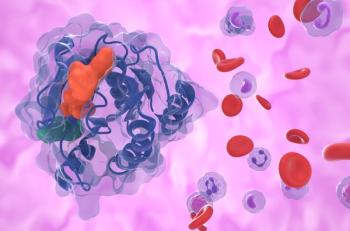
Tulane Researchers Unveil Potential New Treatment for IPF
An already approved cancer drug, Yervoy (ipilimumab), improved lung repair ability in a study of mice with idiopathic pulmonary fibrosis.
Researchers at Tulane University have discovered a potential new treatment method for idiopathic pulmonary fibrosis (IPF), which impacts more than 3 million people globally. Idiopathic pulmonary fibrosis is a serious and progressive disease that causes scarring of the lungs, making it difficult for patients to breathe. Approximately 50% of patients die within three years of diagnosis.
The study, which was
Ipilimumab is an FDA-approved cancer drug that is marketed by Bristol Myers Squibb as Yervoy. It is a monoclonal antibody that blocks CTLA-4, a protein receptor that functions as an immune checkpoint inhibitor. Yervoy is approved to treat several cancers, including melanoma, renal cell carcinoma, colorectal cancer, hepatocellular cancer, nonsmall-cell lung cancer and esophageal cancer.
Now research is showing how ipilimumab could be used to address the scarring associated with idiopathic pulmonary fibrosis.
“In healthy lungs, specialized cells known as fibroblasts assist in repairing lung tissue; however, in individuals with IPF, certain fibroblasts and adjacent epithelial cells become dysfunctional,” Victor Thannickal, M.D., professor and Harry B. Greenberg Chair of Medicine at Tulane’s John W. Deming Department of Medicine, who served as senior author on the study, told Managed Healthcare Executive.
He explained how in IPF, fibroblasts and nearby epithelial cells become dysfunctional, leading to the accumulation of senescent cells that contribute to lung damage. By blocking CTLA-4 with ipilimumab in mice, the Tulane researchers observed enhanced lung tissue regeneration and reduced scarring, indicating a reactivation of T cells that clear out senescent fibroblasts.
“The CTLA-4 protein typically works to prevent excessive inflammation by inhibiting overactive T cells,” he said. “However, an overabundance of this blocker protein can hinder the beneficial inflammation required to eliminate senescent cells. Our approach involves inhibiting the inhibitor.”
In their analysis, the researchers discovered that mice that received ipilimumab showed significantly improved lung repair ability and recovered faster than mice that did not receive the drug.
The researchers identified CTLA-4 as a potential therapeutic target after examining lung tissue from both humans and mice with IPF and discovering unusually high levels of CTLA4 on T cells in regions where scarring was most pronounced.
“This is a disease I have become passionate about over the years,” said Thannickal, who is a pulmonologist. “It’s a devastating lung disease because it’s rapidly progressive with a very high mortality rate. This does not get enough funding that other cancers more widely recognized. It effects the elderly population, which is why I think sometimes it gets ignored.”
While the results are promising, Thannickal noted there was still a need for additional studies to establish safe dosing strategies and assess efficacy in human patients.
“What’s exciting about this particular finding is that it may be applicable to other diseases for which we found a similar mechanism,” Thannickal said. For example, he cited other age-related diseases where senescent cells accumulate, potentially advancing the understanding of immune rejuvenation and aging treatment.
Newsletter
Get the latest industry news, event updates, and more from Managed healthcare Executive.


















































